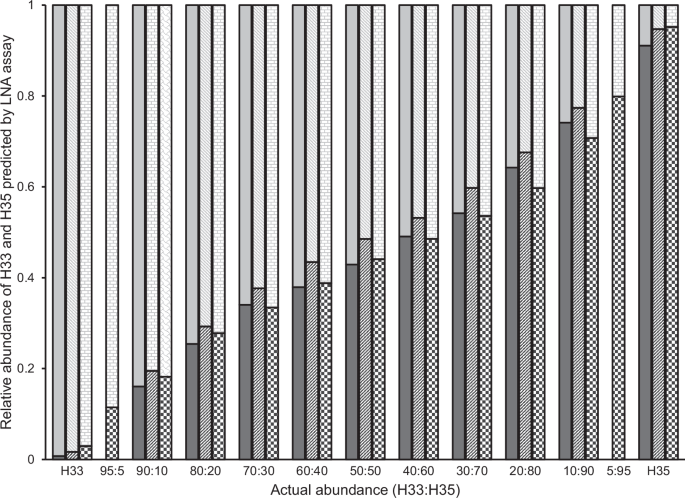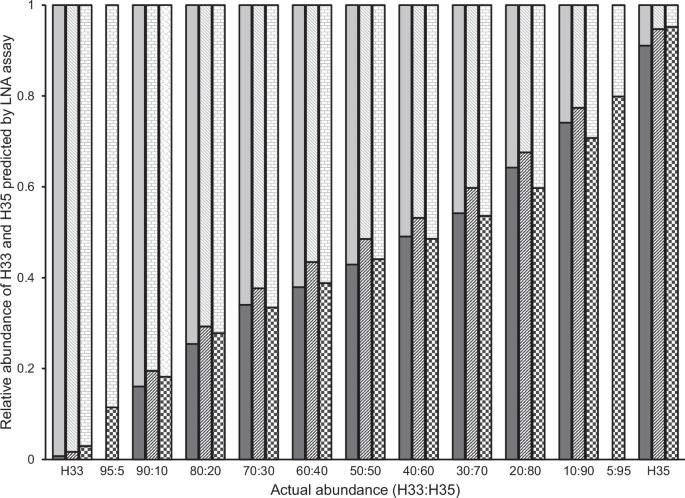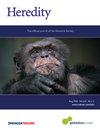南加州入侵伏甲虫(Scolytinae)的普遍异型性
IF 3.9
2区 生物学
Q2 ECOLOGY
引用次数: 0
摘要
长期以来,人们一直认为线粒体异型是一种罕见的畸变,很快就会被选择或漂移所消除。然而,随着诊断方法的改进,真核生物自然种群中出现异型的报道越来越频繁。在这里,我们报告了加州多食性射孔螟(PSHB)--Euwallacea fornicatus--种群中看似稳定的异质体状态,这是一种入侵性伏甲,会导致树木严重枯死。我们开发并验证了一种利用锁定核酸探针检测不同有丝分裂型的 qPCR 检测方法,并对 PSHB 个体的异型性进行了定性评估。我们通过以下方法证明了这种检测方法的实用性:(1) 对野外采集的 PSHB 进行有丝分裂分型,记录加利福尼亚州整个范围内的异型性流行情况;以及 (2) 测量实验室异型性菌落多代中每种有丝分裂型的相对滴度,以评估通过母系种系传播的稳定性。我们对线粒体 DNA 的连续部分进行了下一代测序,结果表明我们的发现不太可能是由于 NUMTs 的存在而引起的,在这些测序中,观察到的每个异质位点都位于 mtDNA 的完全功能编码区内。随后,我们发现异质个体在加利福尼亚的野外种群中很常见,而且异质现象在实验群中至少持续了 10 代。我们还寻找了父系遗漏普遍发生的证据,但没有发现。根据我们的研究结果,我们讨论了一些相互竞争的假说,这些假说认为异质体是如何在加利福尼亚的 PSHB 群体中产生并持续存在的。本文章由计算机程序翻译,如有差异,请以英文原文为准。


Pervasive heteroplasmy in an invasive ambrosia beetle (Scolytinae) in southern California
Heteroplasmy, the presence of multiple mitochondrial genotypes (mitotypes) within an individual, has long been thought to be a rare aberrance that is quickly removed by selection or drift. However, heteroplasmy is being reported in natural populations of eukaryotes with increasing frequency, in part due to improved diagnostic methods. Here, we report a seemingly stable heteroplasmic state in California populations of the polyphagous shothole borer (PSHB), Euwallacea fornicatus; an invasive ambrosia beetle that is causing significant tree dieback. We develop and validate a qPCR assay utilizing locked nucleic acid probes to detect different mitotypes, and qualitatively assess heteroplasmy in individual PSHB. We prove the utility of this assay by: (1) mitotyping field-collected PSHB, documenting the prevalence of heteroplasmy across its range in California; and, (2) measuring relative titers of each mitotype across multiple generations of heteroplasmic laboratory colonies to assess the stability of transmission through the maternal germline. We show that our findings are unlikely to be explained by the existence of NUMTs by next generation sequencing of contiguous sections of mitochondrial DNA, where each of the observed heteroplasmic sites are found within fully functional coding regions of mtDNA. Subsequently, we find heteroplasmic individuals are common in Californian field populations, and that heteroplasmy persists for at least 10 generations in experimental colonies. We also looked for evidence of the common occurrence of paternal leakage, but found none. In light of our results, we discuss competing hypotheses as to how heteroplasmy may have arisen, and continues to perpetuate, in Californian PSHB populations.
求助全文
通过发布文献求助,成功后即可免费获取论文全文。
去求助
来源期刊

Heredity
生物-进化生物学
CiteScore
7.50
自引率
2.60%
发文量
84
审稿时长
4-8 weeks
期刊介绍:
Heredity is the official journal of the Genetics Society. It covers a broad range of topics within the field of genetics and therefore papers must address conceptual or applied issues of interest to the journal''s wide readership
 求助内容:
求助内容: 应助结果提醒方式:
应助结果提醒方式:


